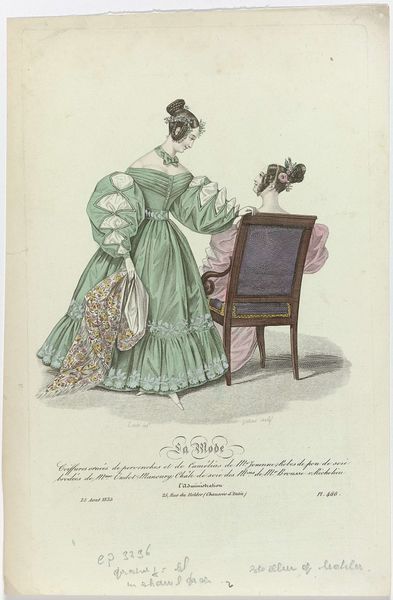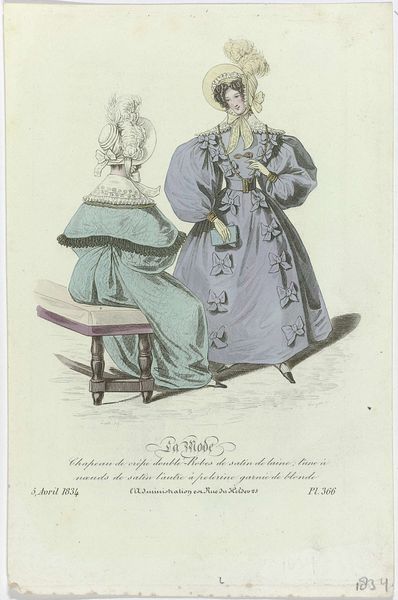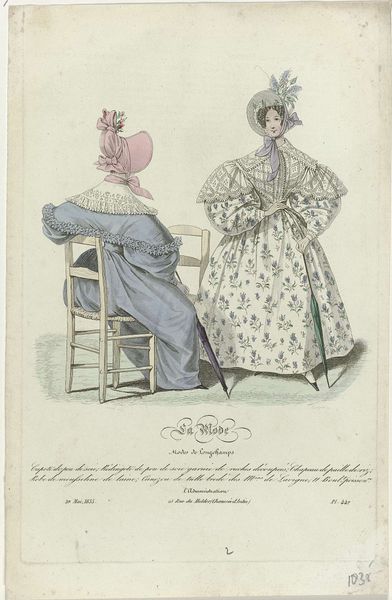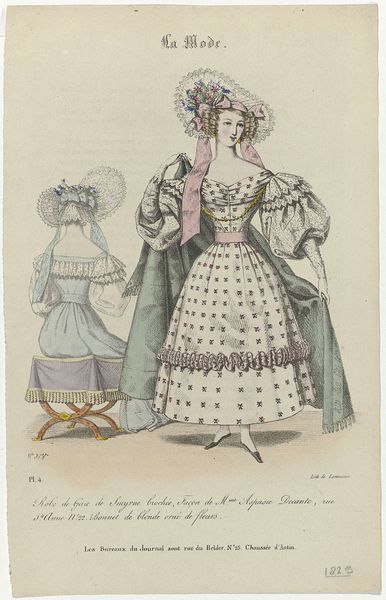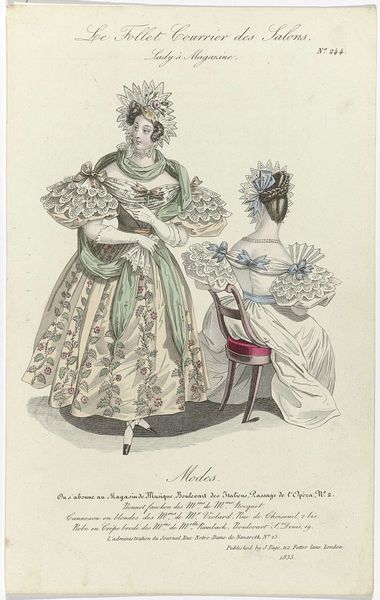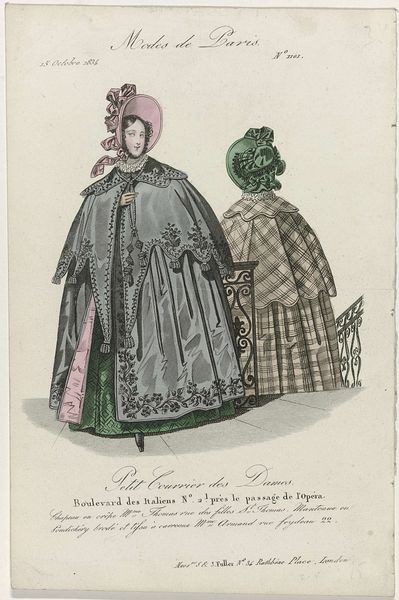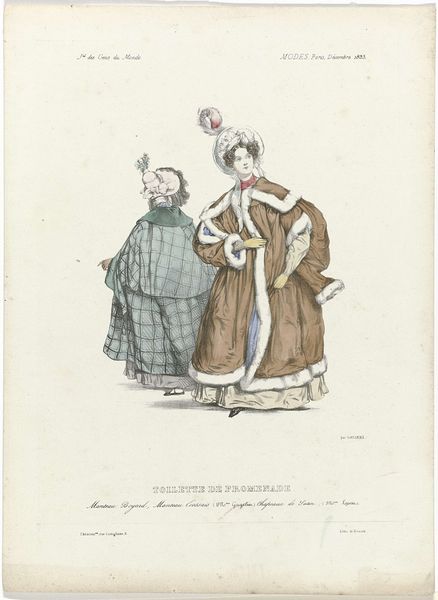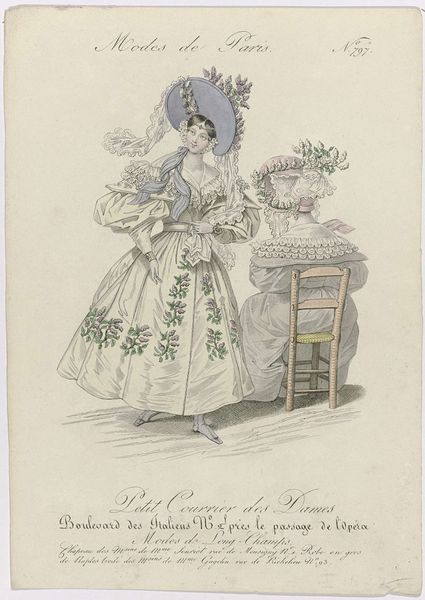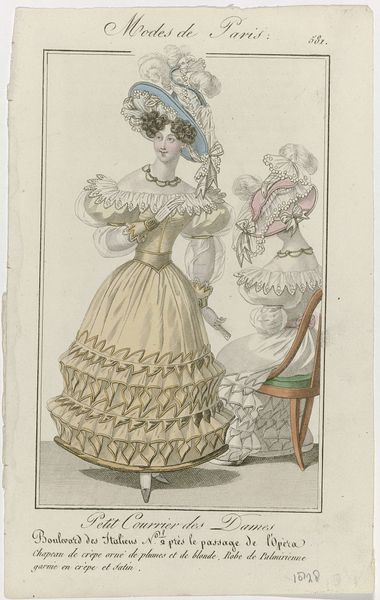
La Mode, 25 septembre 1835, Pl. 472 : Chapeau de paille de riz (...) 1835
0:00
0:00
drawing, mixed-media, print, paper
#
portrait
#
drawing
#
mixed-media
# print
#
paper
#
romanticism
#
watercolour illustration
#
genre-painting
#
dress
Dimensions: height 249 mm, width 159 mm
Copyright: Rijks Museum: Open Domain
Editor: Here we have "La Mode, 25 septembre 1835," plate 472, by Georges Jacques Gatine. It’s a mixed-media print featuring two women in elaborate dresses. I’m struck by how meticulously detailed the clothing is, especially the lace. It almost feels like a sociological study through fashion. What's your take? Curator: Indeed. These fashion plates served a vital function in disseminating Parisian styles across Europe and beyond. What's often missed, however, is the potent intersection of fashion and politics during the 1830s. Consider the emphasis on elaborate, almost exaggerated ornamentation. This can be viewed as a reaction against the relative austerity associated with the Napoleonic era. Editor: That’s interesting! So the fashion becomes a statement of sorts? Curator: Precisely. Furthermore, publications like 'La Mode' fostered a burgeoning consumer culture. Each plate represented a carefully constructed ideal, reinforcing societal expectations surrounding femininity, status, and even national identity. Who dictates these trends and why? Consider the rise of the bourgeoisie and its eager adoption of aristocratic aesthetics, made accessible through print culture. The clothes here are an attempt to present oneself as higher class. Editor: I never considered the consumerism angle. So, this wasn't just about pretty dresses, but about shaping society's desires and norms? Curator: Absolutely. The "watercolour illustration," as it has been termed, is more accurately described as a form of propaganda. These images molded aspiration, influencing the very fabric of social interaction and, through art like this, it's effect is not necessarily positive, or even neutral. Editor: That's a profound observation. I now see beyond the aesthetic and recognize the plate's cultural power. I understand the way institutions can drive our desires. Curator: Precisely, understanding that tension and seeing beyond the surface, can lead to exciting research into visual and material culture.
Comments
No comments
Be the first to comment and join the conversation on the ultimate creative platform.
